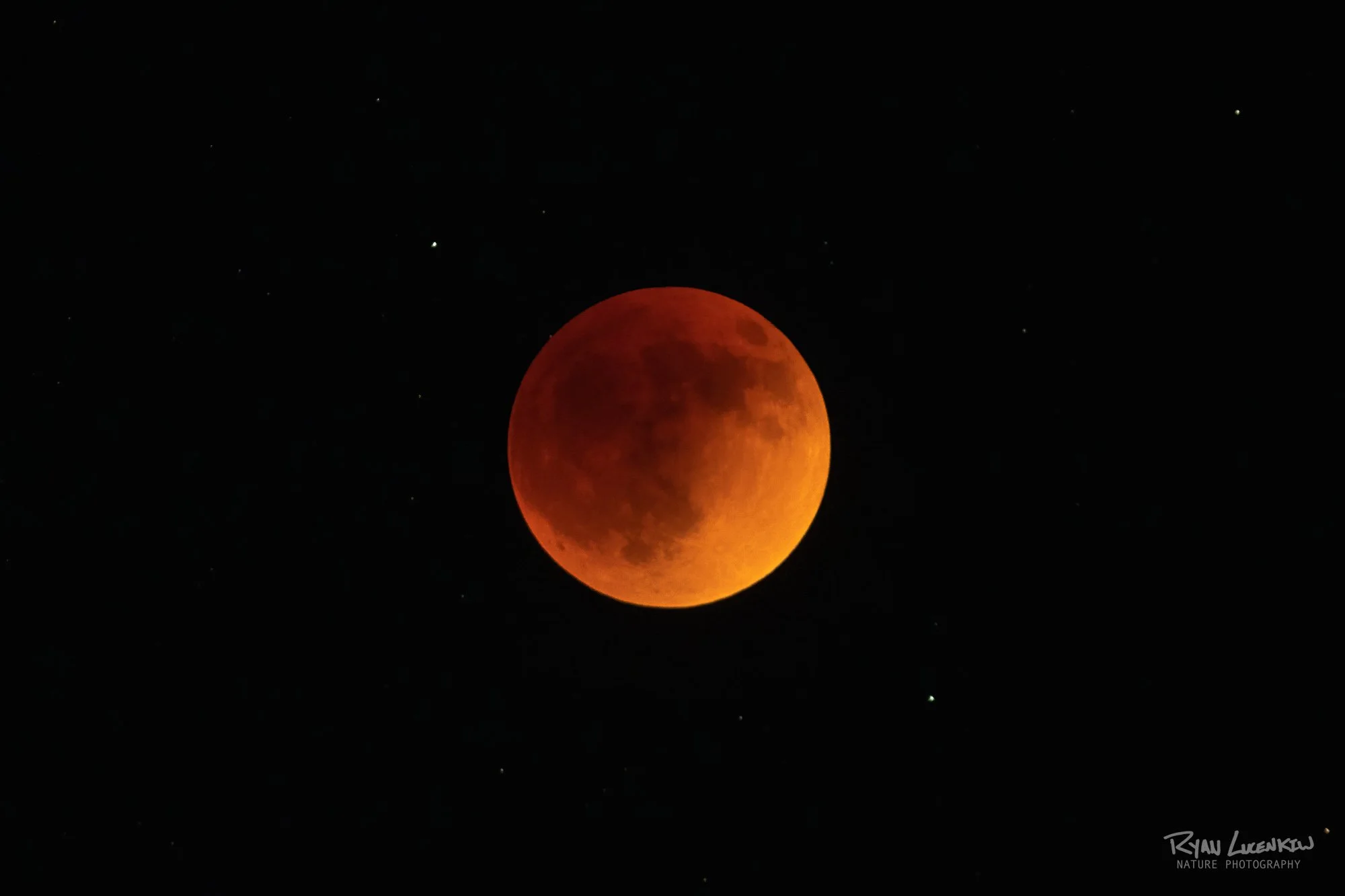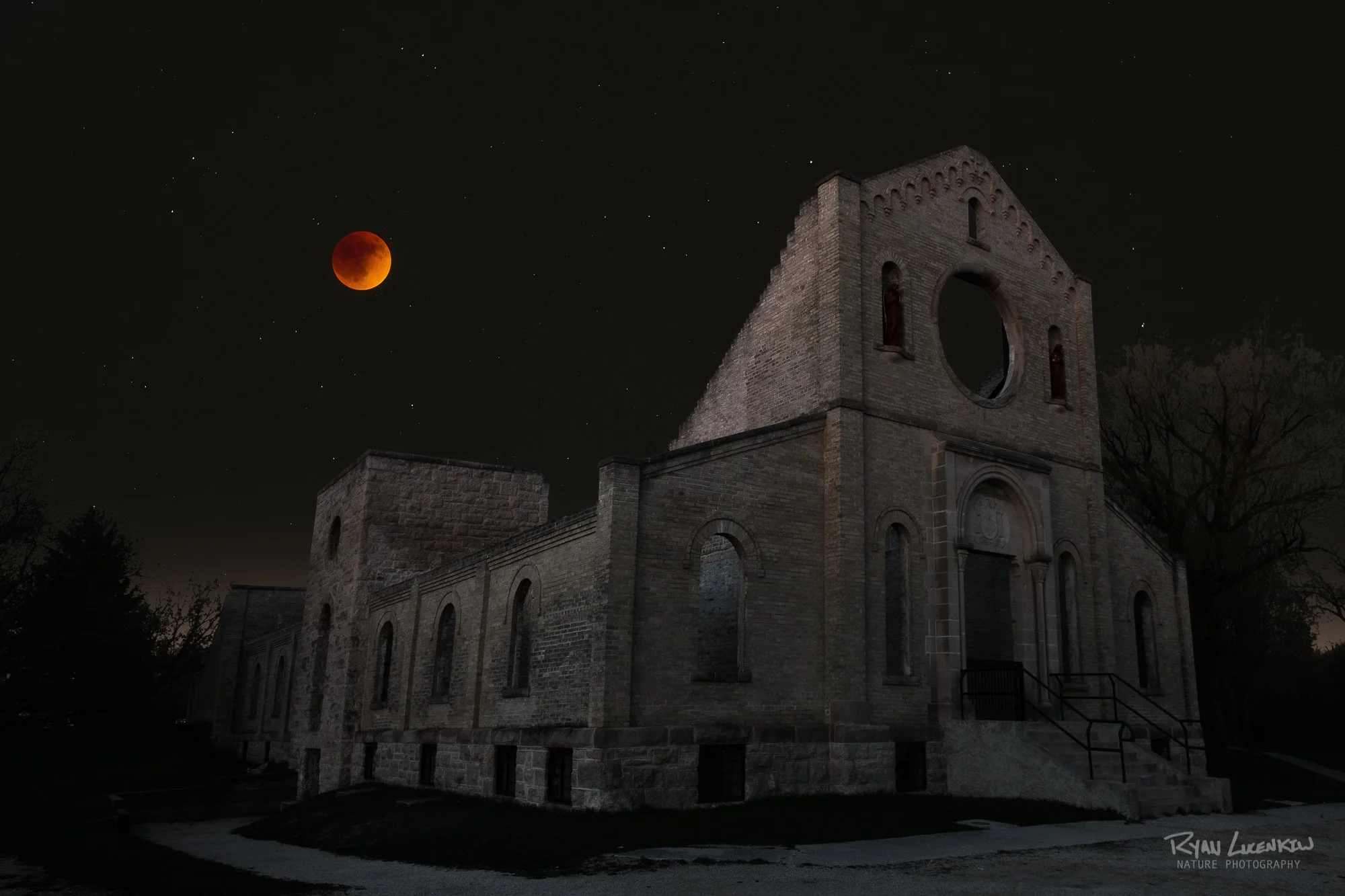Reflections From a Blood Moon
Reflections From a Blood Moon
On May 16, I went out to watch and photograph the blood moon. It was a bit dicey as I caught glimpses of Earth’s shadow drifting across the face of the moon between clouds. Luckily, it cleared up nicely for the duration of totality.
Now maybe it was because I had just finished watching season 2 of Cosmos with Niel Degrasse Tyson, or maybe it was because I had taken more time to understand the science behind what was happening. In any case, this event had much more impact for me than blood moons I have seen in the past.
For one, I knew a lot more about them. I made a specific plan to photograph this one. I had a shot in mind. That always makes the moment more meaningful to me, but there was something else. It didn’t kick in until the next day either once I had a chance to process the experience.
What Is A Blood Moon?
A blood moon is a total lunar eclipse. A lunar eclipse happens when Earth passes directly between the moon and sun. The shadow of Earth blocks light from the sun from reaching the moon. In a blood moon, sunlight is refracted through Earth’s atmosphere. The shorter wavelengths (blue) are scattered so only the red light passes on.
This image is a composite inspired by the elements around me while shooting. There are three photos combined. The building, moon, and stars.
Cosmic Scale
When most people think of the cosmos, the infinite universe, the trillions upon trillions of stars, they tend to see it as something colossal. We really have no idea how large it is. Partially because it is constantly expanding, but we also just can’t fathom that kind of distance.
Over the last few years, I’ve been geeking out more and more on space. I photograph space, of course, but I also watch the live streams of rocket launches like when SpaceX’s Falcon 9 brought two astronauts to the International Space Station. I sometimes watch PBS Spacetime on YouTube for things like the top 5 most plausible methods of space travel. I regularly consume images of deep space objects such as galaxies and nebulas.
NASA released a couple of images earlier this year, the first taken by the new James Webb Space Telescope, into the public domain. Among them was the image titled Cosmic Cliffs. It's a close up of an area inside the Carina Nebula some 7,500 lightyears away. The cliffs of space dust in the image are a whopping 7 lightyears tall. A lightyear being the distance light will travel in a year.
A nebula is a star birthing region in space, and if we can see it, it's in our own Milky Way Galaxy. Andromeda, for example, is its own galaxy. It is outside of the Milky Way and probably has trillions of nebulas of its own. Andromeda is some 2.5 million(2,500,000) lightyears from Earth. There are objects so far away, that if the dinosaurs left Earth in a rocketship at the speed of light, they still would not have arrived.
When we look up in the night sky and see all those little pin pricks of light, it's easy to feel like it is something that’s “out there,” disconnected to it. We’re not part of it on our little oasis called Earth.
Closer Than You Think
When I was watching the blood moon last May, a thought occurred to me. I was standing there watching the interaction between our planet and another object that lives out there in space. We often hear about the interconnectedness of nature here on Earth, but watching Earth’s shadow cross the face of the Moon for me was a visual indicator of our connection to another celestial object. There are, of course, other signs such as the Moon’s gravity impacting tides on Earth, but nothing that I can think of that is quite as dramatic as an eclipse. The experience served as a reminder that the rest of the universe isn’t as far away as the distance between objects would have us believe. We’re part of it. We’re in the middle of it. It may also raise other questions such as with humans on the cusp of becoming a starfaring species, what lessons have we learned on Earth that we can take with us as we expand our reach out into space.



